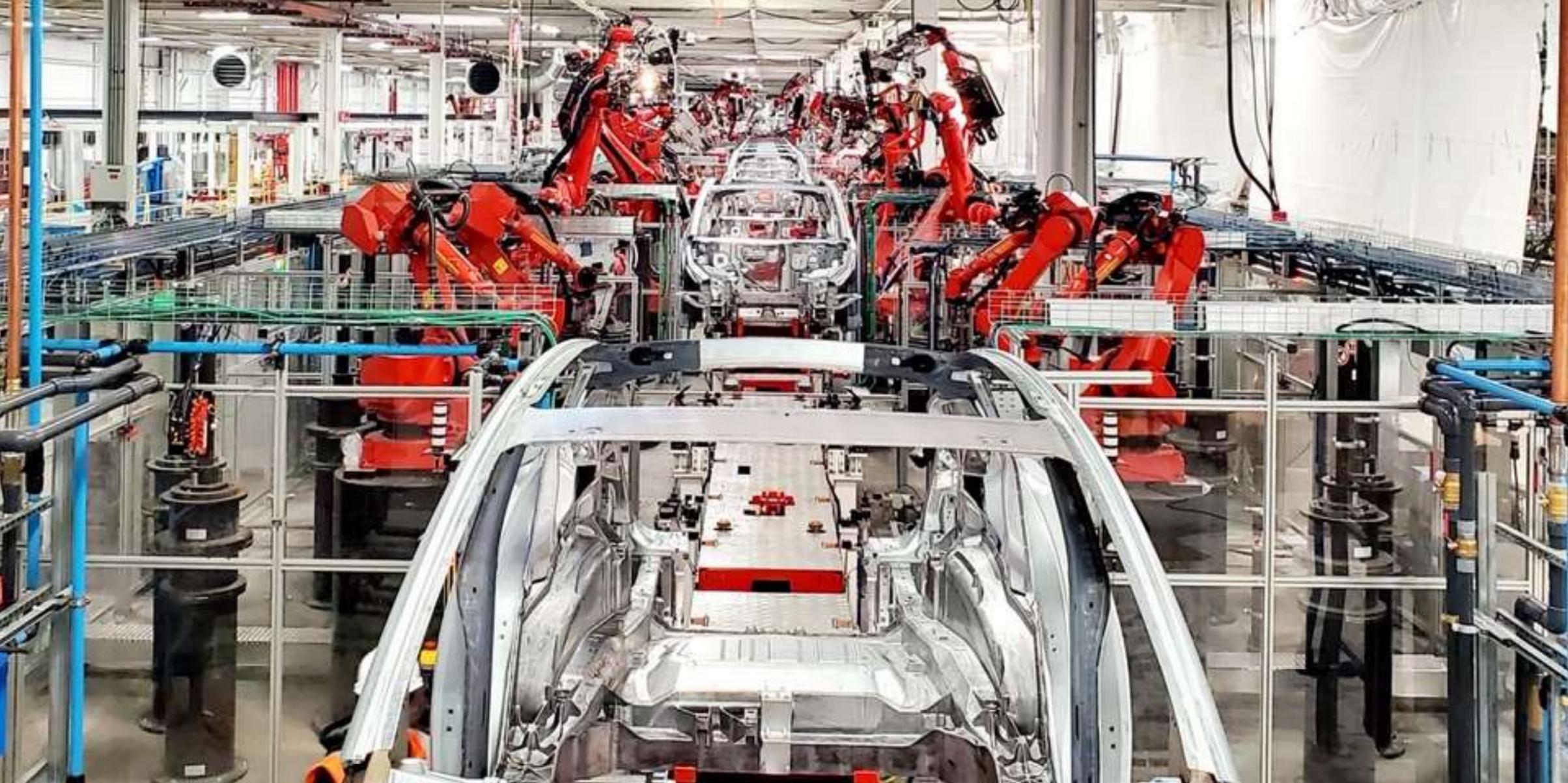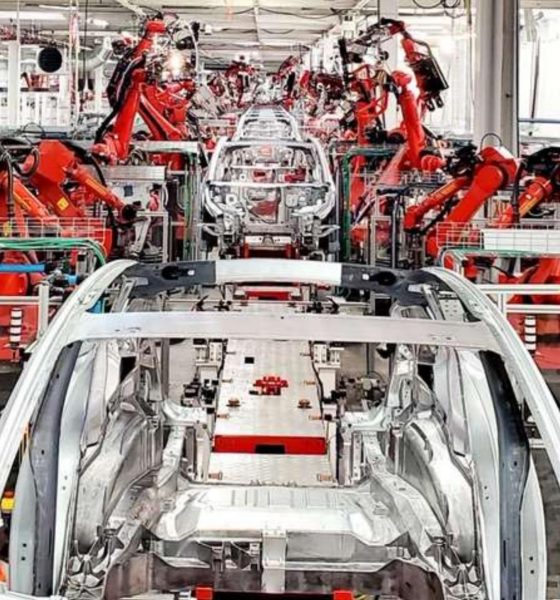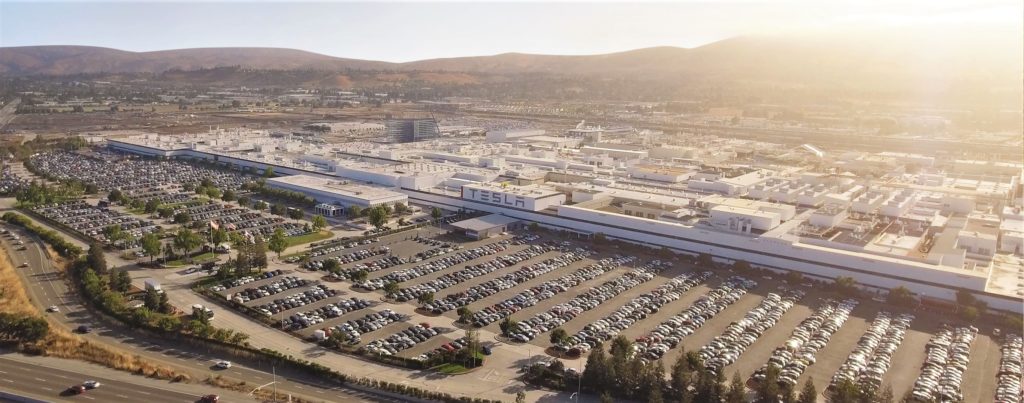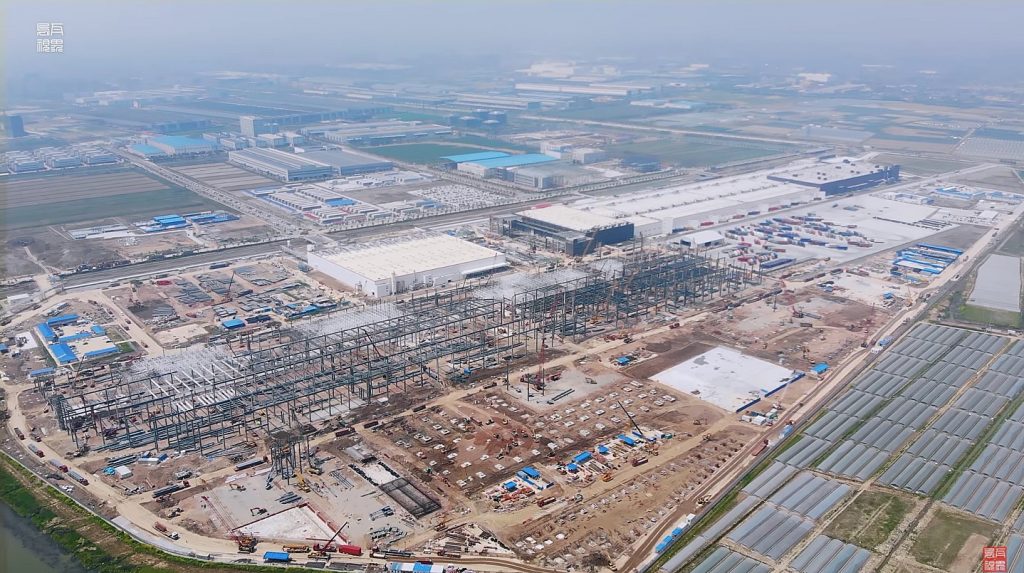

News
Elon Musk’s Tesla ‘Alien Dreadnought’ factory is coming to form–just not where critics expect it
There are many aspects of the Tesla ecosystem and Elon Musk’s past forecasts that critics love to attack. Among the most notable of these is the CEO’s vision of an “Alien Dreadnought” factory, an electric car production facility that is so automated, it resembles the extraterrestrial machines depicted in pop culture. Contrary to what critics today would say, Tesla’s hyper-automated factory is actually coming to form — it’s just not where it was initially expected to be.
Elon Musk’s Alien Dreadnought concept was initially intended for the production of the Model 3. Perhaps this is the reason why Musk originally announced an incredibly aggressive timeframe for the all-electric sedan’s ramp. Those who have followed the Tesla story over the past few years would know that the dreadnought did not come to pass. As issues mounted and delays became more prominent in the Model 3 ramp, Tesla and Elon Musk were forced to abandon the idea and instead adopt a manufacturing system that uses machines and people.
The Fremont factory continues to function in this manner until today. Just recently, Tesla critics were discussing how much Tesla is failing since it still maintains its sprung structure-based GF4 line. Others mocked the fact that some Model Y were getting accessories such as floormats installed on the grounds of the Fremont factory. While some criticism is warranted considering that Elon Musk’s Alien Dreadnought factory is yet to pass in its main vehicle plant, one thing is conveniently forgotten by critics: the Fremont factory is not the only Tesla facility that’s producing vehicles today.

Over in China, Tesla’s Gigafactory Shanghai is now back to full operations. And true to its reputation, the facility’s buildout continues to be insanely quick. The production of the Made-in-China Model 3 is already ongoing, with recent reports stating that around 3,000 units of the all-electric sedan are being manufactured every week. The construction of the Phase 2 zone, widely considered to be a facility intended for Model Y production, is also continuing at a rapid pace. Based on the way Gigafactory Shanghai is designed and the way that it’s ramping, it appears that the facility is well on its way towards becoming the first of Elon Musk’s Alien Dreadnought factories.
One thing that may be worth considering is the fact that the Fremont factory was not designed by Tesla. The California-based car factory’s history dates as far back as 1962, when it operated as the General Motors Fremont Assembly site until 1982, when it was closed. The plant was reopened in 1984 as the New United Motor Manufacturing, Inc. (NUMMI) plant, a joint venture between Toyota and General Motors, where it continued to produce vehicles until 2010. Tesla later bought the factory to produce the Model S sedan, a decision that was panned by critics then as an unnecessary expense.

With this in mind, it could be said that Tesla was not able to start with a blank canvas for its electric car production activities in the Fremont factory. The facility was constructed with conventional car making in mind, and Tesla essentially had to adapt its processes to the factory’s layout. Elon Musk’s admitted hubris aside, it would be quite a challenging endeavor to convert an automotive factory that was initially opened in 1962 into a hyper-automated, futuristic electric vehicle manufacturing machine. These challenges do not exist in Gigafactory Shanghai.
For its China-based site, Tesla was able to design a factory that’s optimized from the ground up for EV production. A look at the activities in the Phase 1 building would show that the site has notable similarities with the Fremont factory’s “tent-based” GA4 line, with its straightforward production process and its easy access to supply trucks. In a way, Gigafactory Shanghai’s Phase 1 zone is GA4 on steroids, and it seems to be working very well so far. With Gigafactory 3 now running, and with the facility’s Model Y production site coming to form, Tesla now has another opportunity to pursue Elon Musk’s Alien Dreadnought idea. But this time around, the company will be attempting the concept from a blank slate. And that might make all the difference.

The signs are already there. Recent drone flyovers in the Gigafactory Shanghai site show deep excavations connected to the Phase 1 building’s stamping area. Tesla has not revealed that the area is intended for, though speculations among the electric car community suggest that the location may host the company’s giant casting machine, which is designed to make vehicles easier to produce.
Elon Musk and Tesla have teased that the massive casting machine will be used for the Model Y, but the company may be looking to adopt such a technique for the Made-in-China Model 3 as well. And this is just the tip of the iceberg. Considering that it’s working with a blank canvas in Gigafactory Shanghai, Tesla can explore and develop automated vehicle production processes that would make the facility deserving of Musk’s Alien Dreadnought title.
Ultimately, it may not be too long before Tesla critics would have to swallow yet another bitter pill. Elon Musk’s Alien Dreadnought concept lives on, and while it may not be starting at the Fremont Factory as initially intended, there is very little that could stop the electric car maker from adopting the idea in facilities beyond Gigafactory Shanghai. Gigafactory Berlin will undoubtedly be incredibly automated as well, and there’s a good chance the Cybertruck Gigafactory will be too.

News
Elon Musk’s Grok AI to be used in U.S. War Department’s bespoke AI platform
The partnership aims to provide advanced capabilities to 3 million military and civilian personnel.

The U.S. Department of War announced Monday an agreement with Elon Musk’s xAI to embed the company’s frontier artificial intelligence systems, powered by the Grok family of models, into the department’s bespoke AI platform GenAI.mil.
The partnership aims to provide advanced capabilities to 3 million military and civilian personnel, with initial deployment targeted for early 2026 at Impact Level 5 (IL5) for secure handling of Controlled Unclassified Information.
xAI Integration
As noted by the War Department’s press release, GenAI.mil, its bespoke AI platform, will gain xAI for the Government’s suite of tools, which enable real-time global insights from the X platform for “decisive information advantage.” The rollout builds on xAI’s July launch of products for U.S. government customers, including federal, state, local, and national security use cases.
“Targeted for initial deployment in early 2026, this integration will allow all military and civilian personnel to use xAI’s capabilities at Impact Level 5 (IL5), enabling the secure handling of Controlled Unclassified Information (CUI) in daily workflows. Users will also gain access to real‑time global insights from the X platform, providing War Department personnel with a decisive information advantage,” the Department of War wrote in a press release.
Strategic advantages
The deal marks another step in the Department of War’s efforts to use cutting-edge AI in its operations. xAI, for its part, highlighted that its tools can support administrative tasks at the federal, state and local levels, as well as “critical mission use cases” at the front line of military operations.
“The War Department will continue scaling an AI ecosystem built for speed, security, and decision superiority. Newly IL5-certified capabilities will empower every aspect of the Department’s workforce, turning AI into a daily operational asset. This announcement marks another milestone in America’s AI revolution, and the War Department is driving that momentum forward,” the War Department noted.
News
Tesla FSD (Supervised) v14.2.2 starts rolling out
The update focuses on smoother real-world performance, better obstacle awareness, and precise end-of-trip routing, among other improvements.

Tesla has started rolling out Full Self-Driving (Supervised) v14.2.2, bringing further refinements to its most advanced driver-assist system. The new FSD update focuses on smoother real-world performance, better obstacle awareness, and precise end-of-trip routing, among other improvements.
Key FSD v14.2.2 improvements
As noted by Not a Tesla App, FSD v14.2.2 upgrades the vision encoder neural network with higher resolution features, enhancing detection of emergency vehicles, road obstacles, and human gestures. New Arrival Options let users select preferred drop-off styles, such as Parking Lot, Street, Driveway, Parking Garage, or Curbside, with the navigation pin automatically adjusting to the user’s ideal spot for precision.
Other additions include pulling over for emergency vehicles, real-time vision-based detours for blocked roads, improved gate and debris handling, and extreme Speed Profiles for customized driving styles. Reliability gains cover fault recovery, residue alerts on the windshield, and automatic narrow-field camera washing for new 2026 Model Y units.
FSD v14.2.2 also boosts unprotected turns, lane changes, cut-ins, and school bus scenarios, among other things. Tesla also noted that users’ FSD statistics will be saved under Controls > Autopilot, which should help drivers easily view how much they are using FSD in their daily drives.
Key FSD v14.2.2 release notes
Full Self-Driving (Supervised) v14.2.2 includes:
- Upgraded the neural network vision encoder, leveraging higher resolution features to further improve scenarios like handling emergency vehicles, obstacles on the road, and human gestures.
- Added Arrival Options for you to select where FSD should park: in a Parking Lot, on the Street, in a Driveway, in a Parking Garage, or at the Curbside.
- Added handling to pull over or yield for emergency vehicles (e.g. police cars, fire trucks, ambulances).
- Added navigation and routing into the vision-based neural network for real-time handling of blocked roads and detours.
- Added additional Speed Profile to further customize driving style preference.
- Improved handling for static and dynamic gates.
- Improved offsetting for road debris (e.g. tires, tree branches, boxes).
- Improve handling of several scenarios, including unprotected turns, lane changes, vehicle cut-ins, and school buses.
- Improved FSD’s ability to manage system faults and recover smoothly from degraded operation for enhanced reliability.
- Added alerting for residue build-up on interior windshield that may impact front camera visibility. If affected, visit Service for cleaning!
- Added automatic narrow field washing to provide rapid and efficient front camera self-cleaning, and optimize aerodynamics wash at higher vehicle speed.
- Camera visibility can lead to increased attention monitoring sensitivity.
Upcoming Improvements:
- Overall smoothness and sentience.
- Parking spot selection and parking quality.
News
Tesla is not sparing any expense in ensuring the Cybercab is safe
Images shared by the longtime watcher showed 16 Cybercab prototypes parked near Giga Texas’ dedicated crash test facility.

The Tesla Cybercab could very well be the safest taxi on the road when it is released and deployed for public use. This was, at least, hinted at by the intensive safety tests that Tesla seems to be putting the autonomous two-seater through at its Giga Texas crash test facility.
Intensive crash tests
As per recent images from longtime Giga Texas watcher and drone operator Joe Tegtmeyer, Tesla seems to be very busy crash testing Cybercab units. Images shared by the longtime watcher showed 16 Cybercab prototypes parked near Giga Texas’ dedicated crash test facility just before the holidays.
Tegtmeyer’s aerial photos showed the prototypes clustered outside the factory’s testing building. Some uncovered Cybercabs showed notable damage and one even had its airbags engaged. With Cybercab production expected to start in about 130 days, it appears that Tesla is very busy ensuring that its autonomous two-seater ends up becoming the safest taxi on public roads.
Prioritizing safety
With no human driver controls, the Cybercab demands exceptional active and passive safety systems to protect occupants in any scenario. Considering Tesla’s reputation, it is then understandable that the company seems to be sparing no expense in ensuring that the Cybercab is as safe as possible.
Tesla’s focus on safety was recently highlighted when the Cybertruck achieved a Top Safety Pick+ rating from the Insurance Institute for Highway Safety (IIHS). This was a notable victory for the Cybertruck as critics have long claimed that the vehicle will be one of, if not the, most unsafe truck on the road due to its appearance. The vehicle’s Top Safety Pick+ rating, if any, simply proved that Tesla never neglects to make its cars as safe as possible, and that definitely includes the Cybercab.








